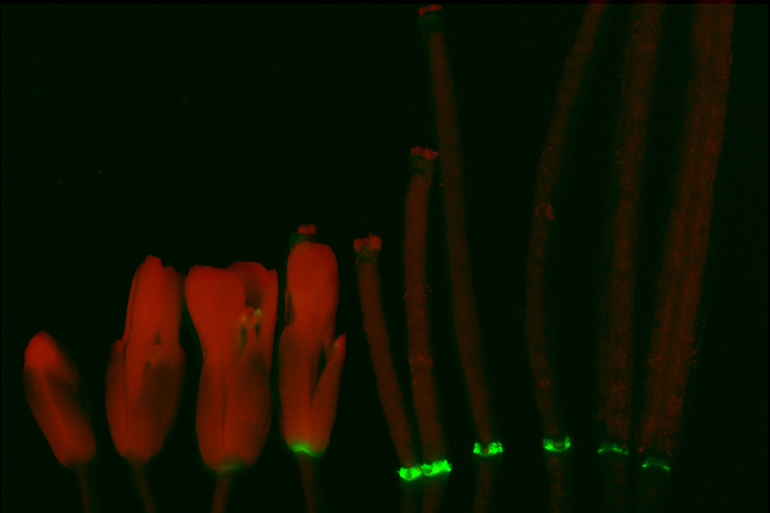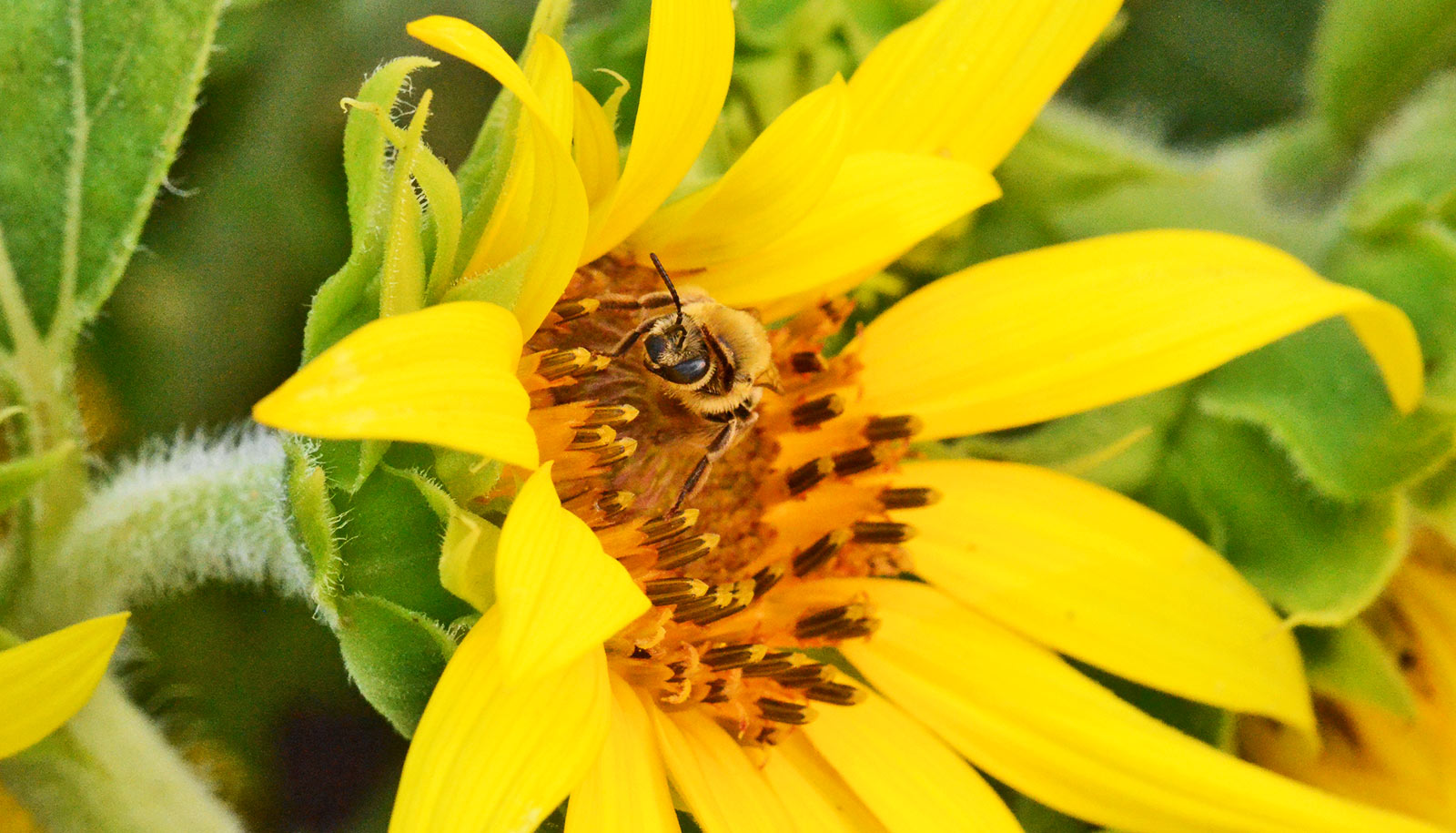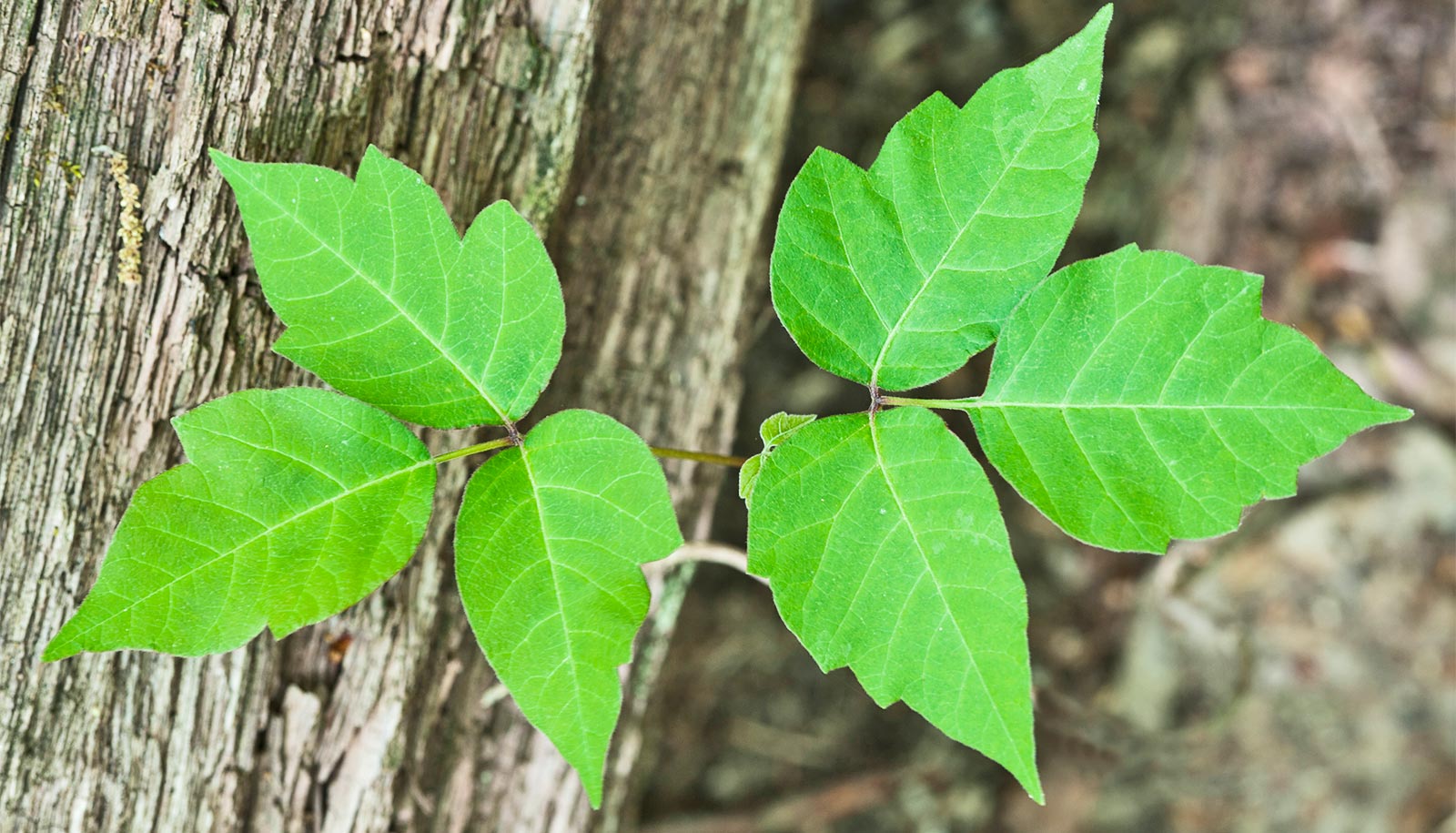When parts of a plant, such as dead leaves, flowers, or ripe fruit detach, the process is called abscission. A new study sheds light on the process that governs how and when plants shed their parts.
Knowing how the process works will help increase understanding of both plant development and responses to environmental signals—such as drought and pest infection—while allowing scientists to control the process for flower, fruit, and vegetable industries.
The earliest steps of abscission involve changes in a special layer of cells, called the abscission zone, located at the base of the flower. As a flower matures, cells in this layer begin to separate from one another along the entire zone, creating a clean rift between the base of the flower and the petals. As the rift enlarges, the petals fall off and are sent tumbling to the ground.

Dropping petals
“Scientists have long wondered how a plant regulates this cell separation process, in particular the molecular mechanism that both triggers and powers the process,” says lead author O. Rahul Patharkar, a postdoctoral fellow in the Division of Biological Sciences at the University of Missouri.
“We know that when a plant is close to dropping its petals, many genes are activated. A lot of this gene activity, or transcription, is exponentially increased in a relatively short time, ultimately leading to abscission.”
One gene that gets a boost in its activity is called HAESA, a gene required for floral abscission to occur. Previous studies have shown that activity of this gene increases by a magnitude of 27-fold from the time the flower bud opens to when it drops its petals, a period of about 2 days.
‘Positive feedback loop’
Patharkar’s new research identified two important connections in the mechanisms that explain this rapid increase in HAESA gene expression.
The research team found that plants that overexpress a certain regulator protein do not activate HAESA and do not drop their flower petals. The findings suggest that the protein found is a negative regulator of HAESA, meaning it prevents expression of the gene.
Additionally, the protein also acts as a molecular “switch” responsible for turning the process on and off and it is this “positive feedback loop” that is important in the abscission process.
“A good analogy for the positive feedback loop is that it’s the turbocharger for the process of abscission,” Patharkar says. “Basically, it amplifies the power of abscission causing the plant to drop its leaves or flowers.”
Computer learns to ID leaves faster than a botanist
“The study puts together a number of different genes and proteins into a new model that helps explain how plants precisely control floral organ abscission,” says John C. Walker, professor of biological sciences and corresponding author of the publication.
“Eventually, the findings will provide researchers with new methods of controlling the process that could help the fruit and flower industries that want their products to stay in place until ready for harvest.”
The study appears in the Proceedings of the National Academy of Sciences, with support from the National Science Foundation. The content is solely the responsibility of the authors and does not necessarily represent the official views of the funding agency.
Source: University of Missouri (Originally published March 11, 2015)



